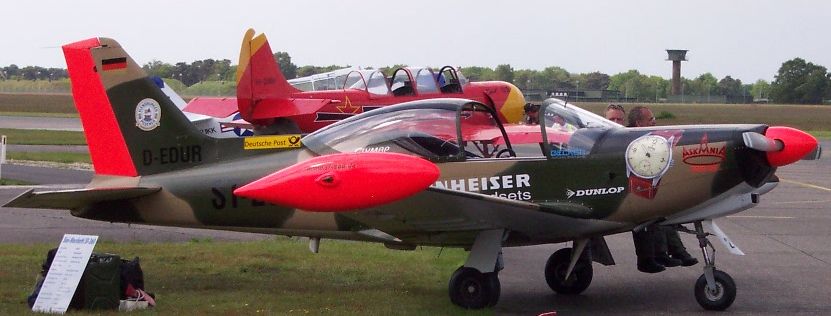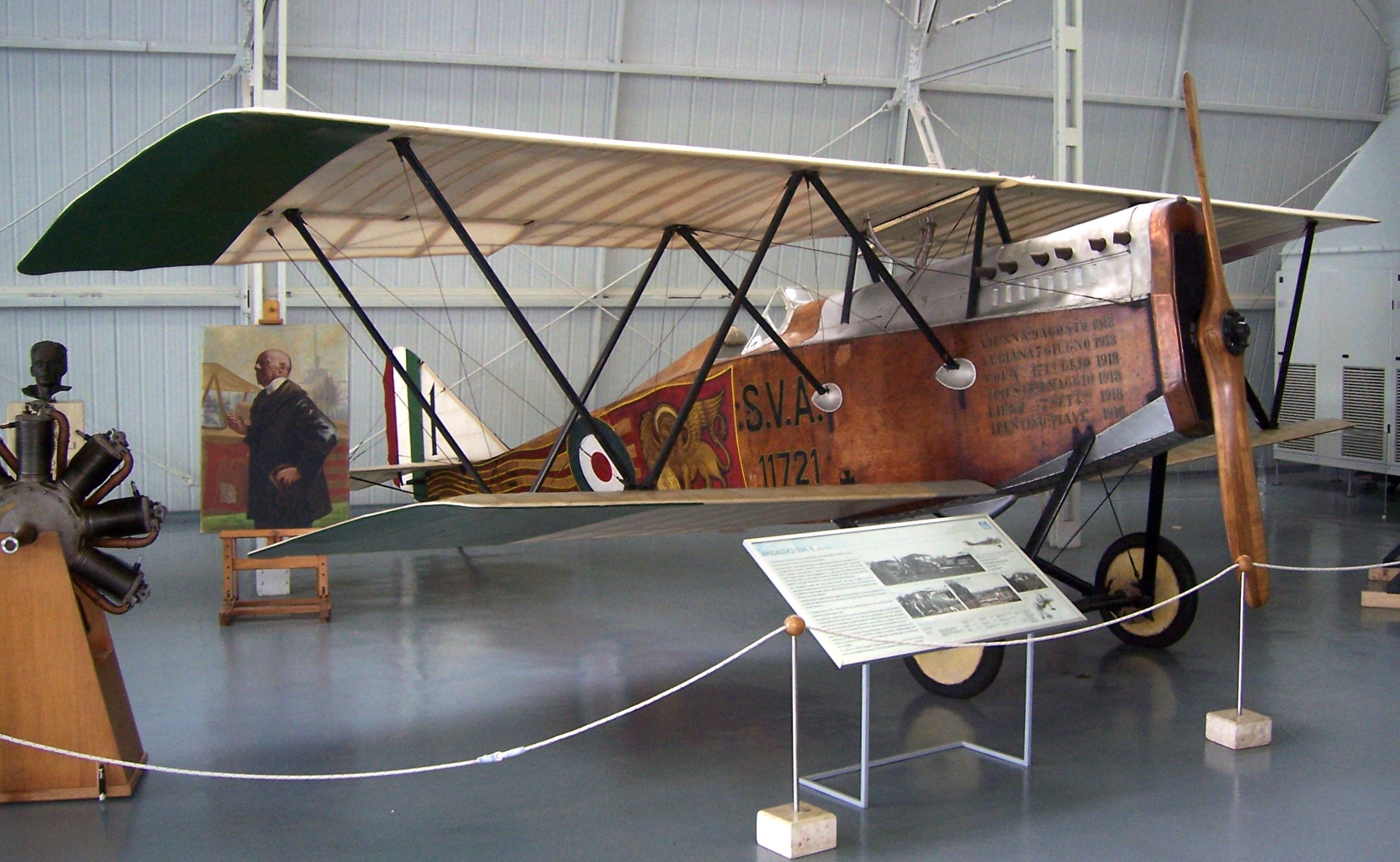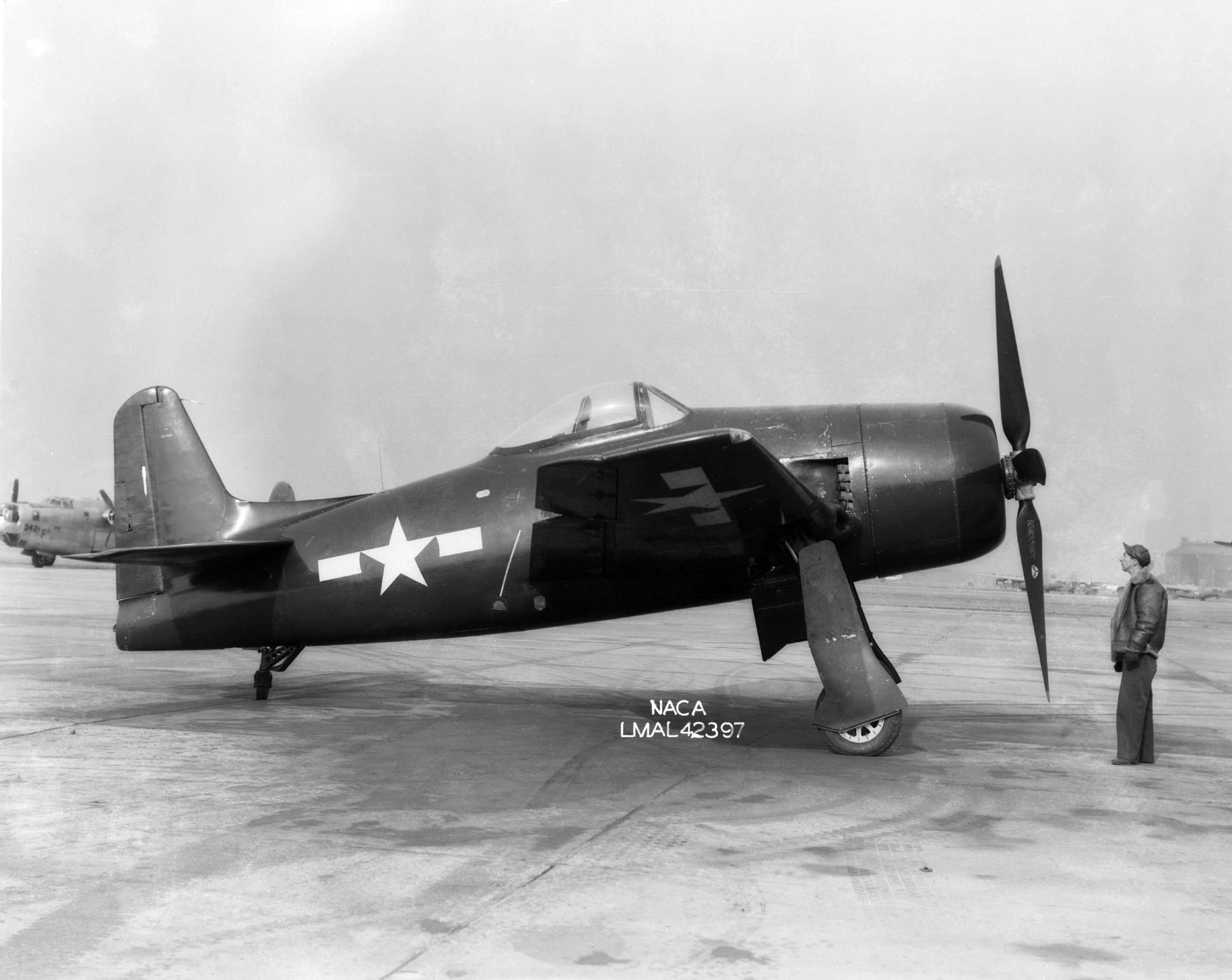|
Macchi M.C.72
The Macchi M.C. 72 is an experimental seaplane designed and built by the Italian aircraft company Macchi Aeronautica. The M.C. 72 held the world speed record for all aircraft for five years. In 1933 and 1934 it set world speed records for piston engine-powered seaplanes; the latter still stands. Design and development The Macchi M.C. 72 was one of a series of seaplanes developed by Macchi Aeronautica. In the 1920s, Macchi focused on speed and on winning the Schneider Trophy. In 1922 the company hired aircraft designer Mario Castoldi to design high-speed aircraft. In 1926 the company won the trophy with the M.39, which attained a top speed of 396 km/h (246 mph). Further aircraft, the M.52, M.52R and the M.67, were designed and built but victory in the Schneider races kept eluding the Italians. Castoldi then designed the M.C. 72, a single-seater aircraft with two floats powered by a modified FIAT AS.6 supercharged V24 engine, generating around 1,900-2,300 kW (2, ... [...More Info...] [...Related Items...] OR: [Wikipedia] [Google] [Baidu] |
WikiProject Aircraft
A WikiProject, or Wikiproject, is a Wikimedia movement affinity group for contributors with shared goals. WikiProjects are prevalent within the largest wiki, Wikipedia, and exist to varying degrees within Wikimedia project, sister projects such as Wiktionary, Wikiquote, Wikidata, and Wikisource. They also exist in different languages, and translation of articles is a form of their collaboration. During the COVID-19 pandemic, CBS News noted the role of Wikipedia's WikiProject Medicine in maintaining the accuracy of articles related to the disease. Another WikiProject that has drawn attention is WikiProject Women Scientists, which was profiled by ''Smithsonian Magazine, Smithsonian'' for its efforts to improve coverage of women scientists which the profile noted had "helped increase the number of female scientists on Wikipedia from around 1,600 to over 5,000". On Wikipedia Some Wikipedia WikiProjects are substantial enough to engage in cooperative activities with outside organization ... [...More Info...] [...Related Items...] OR: [Wikipedia] [Google] [Baidu] |
Fuselage
The fuselage (; from the French ''fuselé'' "spindle-shaped") is an aircraft's main body section. It holds crew, passengers, or cargo. In single-engine aircraft, it will usually contain an engine as well, although in some amphibious aircraft the single engine is mounted on a pylon attached to the fuselage, which in turn is used as a floating hull. The fuselage also serves to position the control and stabilization surfaces in specific relationships to lifting surfaces, which is required for aircraft stability and maneuverability. Types of structures Truss structure This type of structure is still in use in many lightweight aircraft using welded steel tube trusses. A box truss fuselage structure can also be built out of wood—often covered with plywood. Simple box structures may be rounded by the addition of supported lightweight stringers, allowing the fabric covering to form a more aerodynamic shape, or one more pleasing to the eye. Geodesic construction Ge ... [...More Info...] [...Related Items...] OR: [Wikipedia] [Google] [Baidu] |
Supermarine S
Supermarine was a British aircraft manufacturer that is most famous for producing the Spitfire fighter plane during World War II as well as a range of seaplanes and flying boats, and a series of jet-powered fighter aircraft after World War II. The company had successes in the Schneider Trophy for seaplanes, with three wins in a row of 1927, 1929 and 1931. The company was founded in 1913 as Pemberton-Billing Ltd on the River Itchen close to Woolston, Southampton, on ground previously purchased by Noel Pemberton Billing to construct motor launches. It produced a couple of prototypes using quadruplane designs to shoot down zeppelins, the Supermarine P.B.29 and the Supermarine Nighthawk. The aircraft were fitted with the recoilless Davis gun and the Nighthawk had a separate powerplant to power a searchlight.The World's Worst Aircraft James Gilbert Upon election as a Member of Parliament (MP) in 1916, Pemberton-Billing sold the company to his factory manager and longtime ass ... [...More Info...] [...Related Items...] OR: [Wikipedia] [Google] [Baidu] |
Macchi MC
Aermacchi was an Italian aircraft manufacturer. Formerly known as Aeronautica Macchi, the company was founded in 1912 by Giulio Macchi at Varese in north-western Lombardy as Nieuport-Macchi, to build Nieuport monoplanes under licence for the Italian military. With a factory located on the shores of Lake Varese, the firm originally manufactured a series of Nieuport designs, as well as seaplanes. After World War II, the company began producing motorcycles as a way to fill the post-war need for cheap, efficient transportation. The company later specialised in civil and military pilot training aircraft. In July 2003, Aermacchi was integrated into the Finmeccanica Group (now Leonardo) as Alenia Aermacchi, which increased its shareholding to 99%. Military trainers Since the beginning, the design and production of military trainers have been the core business of Alenia Aermacchi. The products include: * SF-260, piston-engined or turboprop-powered screener/primary trainer * ... [...More Info...] [...Related Items...] OR: [Wikipedia] [Google] [Baidu] |
Italian Air Force Museum
The Italian Air Force Museum is an aircraft museum at Vigna di Valle, on Lake Bracciano (Lazio), in central Italy. It is operated by the . The museum's collection has an emphasis on Italian machines and seaplanes. While maintaining the technical and historical aspects, the museum is also dedicated to the influence aviation has had on Italian art, featuring works by Futurist painters Pietro Annigoni, Giacomo Balla, and Tato; and contemporary art such as ''Flight: Papiers froissés'' (literally crumpled paper) by Antonio Papasso. Collection Propeller aircraft * Ansaldo AC.2 * Ansaldo SVA 5 * Blériot XI * Caproni Ca.3 * Caproni Ca.100 * Cant Z.506S Airone * Douglas C47A Skytrain * Fiat C.29 * Fiat CR.32 * Fiat CR.42 Falco * Fiat G.49 * Fiat G.55 * Fiat G.59 4B * Fiat G.212 * Fieseler Fi 156 * Grumman HU-16A Albatross * Grumman S2F-1 Tracker * IMAM Ro.37 bis * IMAM Ro.41 (under restoration) * IMAM Ro.43 * Lohner L * Macchi M.B.308 * Macchi MB.323 * Macch ... [...More Info...] [...Related Items...] OR: [Wikipedia] [Google] [Baidu] |
Rare Bear
''Rare Bear'' is a highly modified Grumman F8F Bearcat that dominated the Reno Air Races for decades. History The Bearcat that became Rare Bear was a severely damaged wreck when discovered by Lyle Shelton in 1969. It had been abandoned next to a runway on Porter County Regional Airport in Valparaiso, Indiana after it crashed there from a throttle-on torque roll in 1962. The airplane had been stripped by parts hunters, so Shelton found a fuselage, wing center section, landing gear and a right wing panel, but little else. Shelton bought the wreck and had the pieces trucked to Orange County, California and restoration began. One of the major modifications made during the rebuild involved installing a more powerful Wright R-3350 (from a Douglas Skyraider) in place of the Pratt & Whitney R-2800 engine that is standard for a Bearcat. A Douglas DC-7 propeller and cowl were used and Shelton bought the landing gear fairings and doors from the wreck of Bob Kucera's Bearcat. Bill Forno ... [...More Info...] [...Related Items...] OR: [Wikipedia] [Google] [Baidu] |
Grumman F8F Bearcat
The Grumman F8F Bearcat is an American single-engine carrier-based fighter aircraft introduced in late World War II. It served during the mid-20th century in the United States Navy, the United States Marine Corps, and the air forces of other nations. It was Grumman Aircraft's last piston engined fighter aircraft. Modified versions of the Bearcat have broken speed records for piston-engined aircraft. Today, the Bearcat is popular among warbird owners and air racers. Design and development Concept The Bearcat concept began during a meeting between Battle of Midway veteran F4F Wildcat pilots and Grumman Vice President Jake Swirbul at Pearl Harbor on 23 June 1942. At the meeting, Lieutenant Commander Jimmie Thach emphasized one of the most important requirements in a good fighter plane was "climb rate". Climb performance is strongly related to the power-to-weight ratio, and is maximized by wrapping the smallest and lightest possible airframe around the most powerful avai ... [...More Info...] [...Related Items...] OR: [Wikipedia] [Google] [Baidu] |
World War II
World War II or the Second World War, often abbreviated as WWII or WW2, was a world war that lasted from 1939 to 1945. It involved the World War II by country, vast majority of the world's countries—including all of the great powers—forming two opposing military alliances: the Allies of World War II, Allies and the Axis powers. World War II was a total war that directly involved more than 100 million Military personnel, personnel from more than 30 countries. The major participants in the war threw their entire economic, industrial, and scientific capabilities behind the war effort, blurring the distinction between civilian and military resources. Air warfare of World War II, Aircraft played a major role in the conflict, enabling the strategic bombing of population centres and deploying the Atomic bombings of Hiroshima and Nagasaki, only two nuclear weapons ever used in war. World War II was by far the List of wars by death toll, deadliest conflict in hu ... [...More Info...] [...Related Items...] OR: [Wikipedia] [Google] [Baidu] |
Messerschmitt Me 209
The first Messerschmitt Me 209 was a single-engine racing aircraft which was designed for and succeeded at breaking speed records. This Me 209 was a completely new aircraft whose designation was used by Messerschmitt as a propaganda tool. Although the aircraft was designed only to break speed records, it was hoped that its name would associate it with the Bf 109 already in combat service.Lepage 2009, p. 220. The designation ''Me 209'' was given for propaganda purposes to cause confusion with the Messerschmitt Bf 109, the '' Luftwaffe''s primary fighter throughout World War II. It was later reused for the actual proposed successor to the Bf 109. Design and development The designation Me 209 was used for two separate projects during World War II. The first was a record-setting, single-engined race aircraft, for which little or no consideration was given to adaptation for combat. The second Me 209 was a proposal for a follow-up to the highly successful Messerschmitt Bf 109 whic ... [...More Info...] [...Related Items...] OR: [Wikipedia] [Google] [Baidu] |
Heinkel He 100
The Heinkel He 100 was a German pre-World War II fighter aircraft design from Heinkel. Although it proved to be one of the fastest fighter aircraft in the world at the time of its development, the design was not ordered into series production. Approximately 19 prototypes and pre-production examples were built. None are known to have survived the war. The reason for the He 100 failing to reach production status is mostly unknown. Officially, the Luftwaffe rejected the He 100 to concentrate single-seat fighter development on the Messerschmitt Bf 109. Following the adoption of the Bf 109 and Messerschmitt Bf 110 as the Luftwaffe's standard fighter types, the Ministry of Aviation (the Reichsluftfahrtministerium or RLM) announced a "rationalization" policy that placed fighter development at Messerschmitt and bomber development at Heinkel. Because there are no surviving examples, and since many factory documents - including all blueprints for the He 100 - were destroyed during a bo ... [...More Info...] [...Related Items...] OR: [Wikipedia] [Google] [Baidu] |
Hughes H-1 Racer
The Hughes H-1 Racer is a racing aircraft built by Hughes Aircraft in 1935. It set a world airspeed record and a transcontinental speed record across the United States. The H-1 Racer was the last aircraft built by a private individual to set the world speed record; most aircraft to hold the record since have been military designs. Development During his work on his movie '' Hell's Angels'', Howard Hughes employed Glenn Odekirk to maintain the fleet of over 100 aircraft used in the production. The two men shared a common interest in aviation and hatched a plan to build a record-beating aircraft. The aircraft was given many names, but is commonly known as the H-1. It was the first aircraft model produced by the Hughes Aircraft company. Design studies began in 1934 with an exacting scale model (over two feet in length) that was tested in the California Institute of Technology wind tunnel, revealing a speed potential of . Design Streamlining was a paramount design criterion resulti ... [...More Info...] [...Related Items...] OR: [Wikipedia] [Google] [Baidu] |
Francesco Agello
Francesco Agello (27 December 1902 – 24 November 1942) was an Italian test pilot. Biography and flight achievements Born at Casalpusterlengo, Lombardy, Italy, Agello graduated from pilot school in 1924 and soon became a test pilot. He was the fourth of four test pilots who tried to set a speed record with the Macchi M.C.72. However, one after the other, the test pilots ahead of Agello died (first Monti and then Bellini flying the M.C. 72, Neri died flying a CR-20 in 1933). Agello became famous when he succeeded in piloting the plane to a new speed record (over water) on 10 April 1933. He attained an average speed of 683 km/h (424 mph). More than a year later he flew the M.C. 72 to a new speed record of more than 700 km/h (709 km/h or 440 mph) on 23 October 1934. Both records, while obtained in a seaplane, also were absolute flight airspeed record. No one has ever flown a piston-engine seaplane faster since that date. Awards Agello was awarded the ... [...More Info...] [...Related Items...] OR: [Wikipedia] [Google] [Baidu] |





_Rare_Bear_2014_Reno_Air_Races.jpg)


.jpg)
